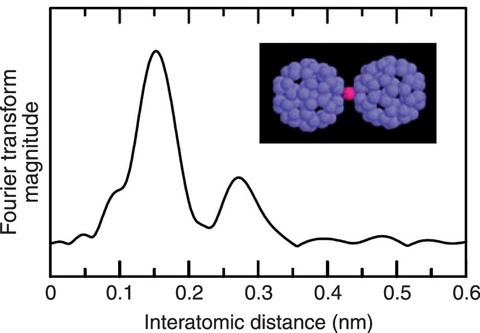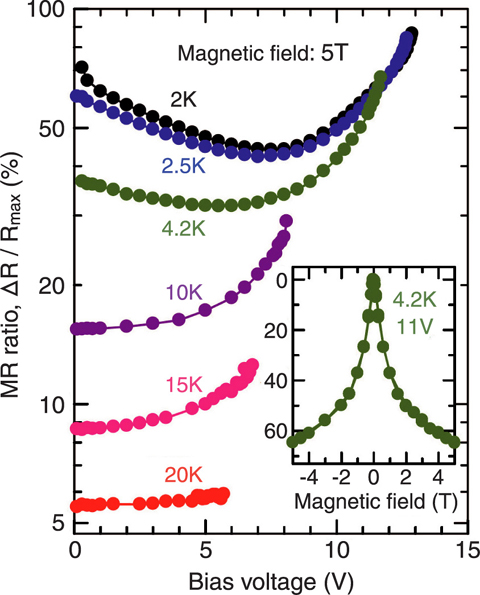
Fig.6-4

Fig.6-5
In the last few decades, electronics devices have come to be highly integrated, supported by the rapid advances of micro-fabrication technologies. But now, we are coming to a critical stage needing a break-through idea different from the existing ones. "Spintronics" has received intensive attention as a promising evolutional approach. In the spintronics devices, the degree of freedom of electron spin (up and down spins) is utilized for data processing and recording, in addition to the electron charge used in conventional electronics devices. A key issue required for the progress of spintronics is how to manipulate the electron spin. For highly efficient spin-manipulation, new materials systems capable of higher spin-polarization have been explored intensively. In these systems, the conductivity of spin-polarized electrons can be controlled over a wide range by applying a magnetic field. Here, we call the ratio of the magnetic-field induced resistance change to the maximum resistance (ΔR/Rmax) the magnetoresistance (MR) ratio. Only inorganic systems have been a subject of the study of the MR effect up to now. The MR ratio, however, is less than 30% in the typical reported system that comprises hybrid films composed of an insulating matrix and embedded metal nanoparticles (so-called granular films).
Recently, we have found that a very large MR effect occurs in granular films of fullerene (C60) based compounds, not obtainable with an inorganic insulating matrix. C60 is an organic molecule made of 60 carbon atoms and with a shape similar to a soccer ball. Firstly, we have found a method of formation of the CC60-transition metal (Co) compounds, mixing the relevant substances in an ultra high vacuum (Fig. 6-4). We have also found that the granular films of the C60-Co compound matrix containing Co nanoparticles are obtained in a certain composition range. The granular-structured C60-Co films exhibit a MR ratio higher than 80% (Fig.6-5) associated with the tunneling effect of spin-polarized electrons. The observed MR ratio is the highest one found in granular systems, and, surprisingly, the ratio is higher than the theoretically predicted upper-limit (50%) with complete spin-polarization. It is also found that range of MR ratio change becomes several times larger and smaller depending on the bias voltage. This behavior is definitely different from the small change reported for inorganic systems.
Our results show clearly that the organic molecule based systems have a considerable advantage for spintronics. Such systems are expected to lead to "molecular spintronics" by incorporating the optical functions and the electrical field effects of organic molecules.